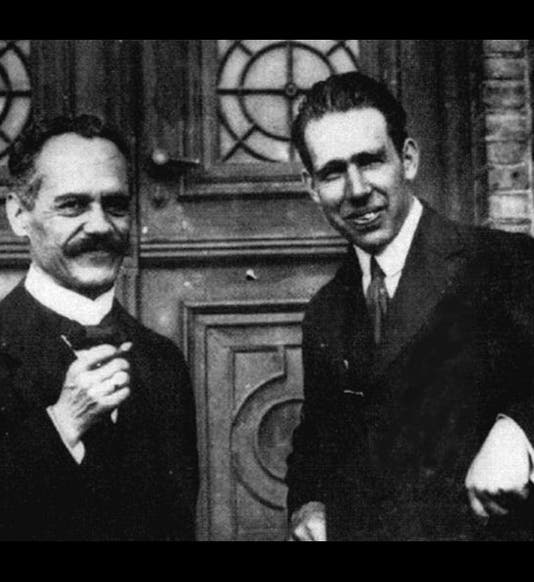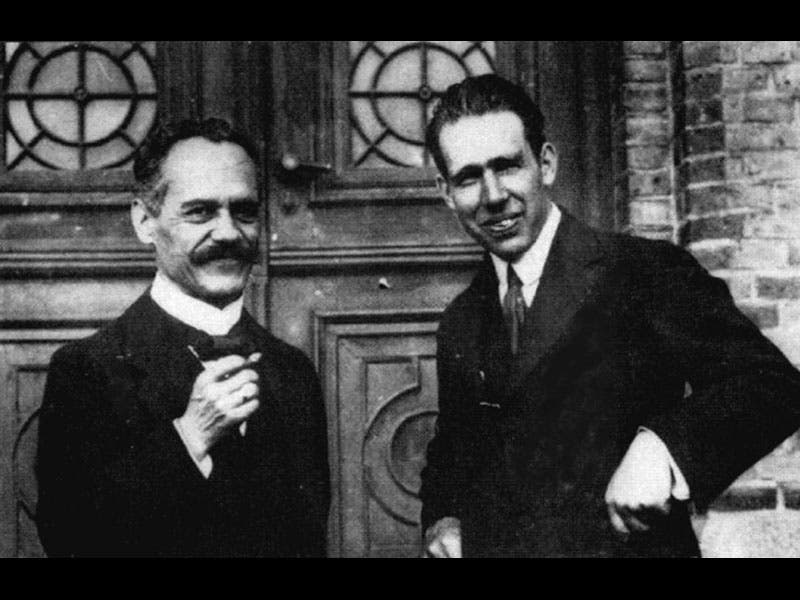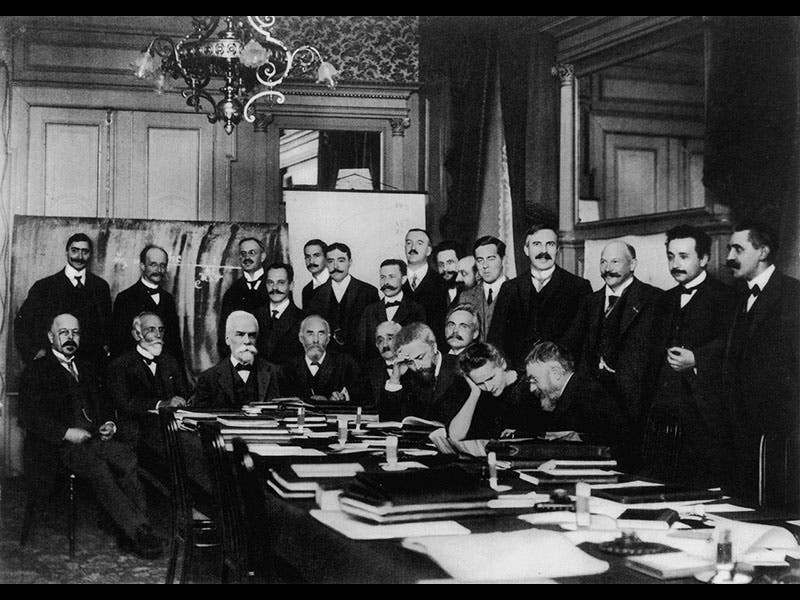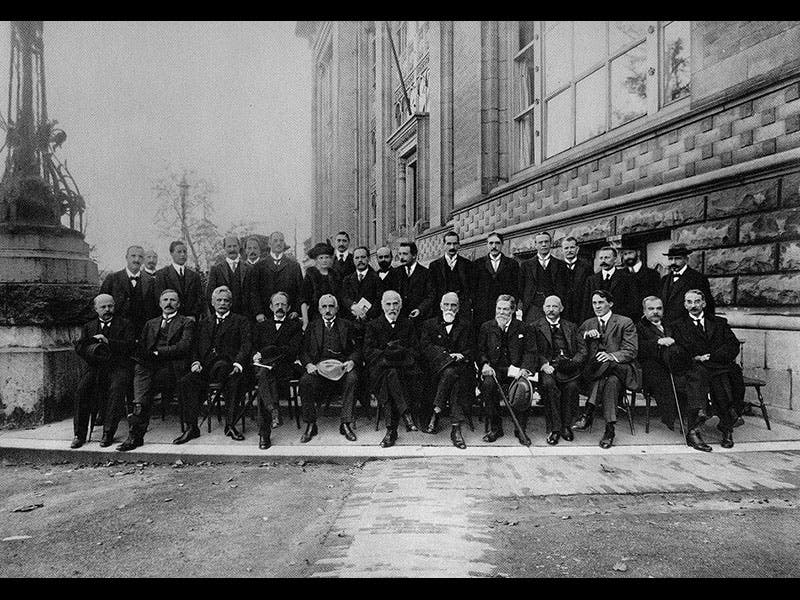Scientist of the Day - Arnold Sommerfeld
Arnold Sommerfeld, a German physicist, was born Dec. 5, 1868. Sommerfeld was appointed professor of theoretical physics at Munich in 1906 (where Röntgen, the discoverer of X-Rays, taught experimental physics). Around 1911, Sommerfeld began the practice of gathering with his students at a coffeehouse in Munich, in a park called the Hofgarten, to talk over the problems of the nuclear atom, x-ray diffraction, and quantum theory. Among these students, over the years, were Wolfgang Pauli, Hans Bethe, Max von Laue, Werner Heisenberg, Peter Debye, I. I. Rabi, and Linus Pauling--all of whom (that's 7 total) were later awarded Nobel Prizes. That seems to be a record number of Nobel Prizes for a mentor. Sommerfeld, sadly, never became a Nobel laureate himself, although he was nominated over 80 times for his important work in quantum mechanics.
T.S. Eliot memorialized Sommerfeld's kaffee klatsch in his poem of 1922, The Waste Land. Nine lines after the famous opening, "April is the cruelest month", Eliot writes: "we stopped in the colonnade,/ and went on in sunlight, into the Hofgarten,/ and drank coffee, and talked for an hour." Presumably Eliot did not talk about quantum physics, but over at another table, Sommerfeld and his students certainly were.
Sommerfeld was invited to the first Solvay conference in Brussels in 1911, and in the group portrait (third image), he is the shorter man standing in the back row, fourth from the left (that is Max Planck who is second from the left; Albert Einstein is second from the right, and Marie Curie, the only woman in attendance, is engaged with Henri Poincare). At the second Solvay conference in 1913 (fourth image), Sommerfeld is in the middle of the second row, between Curie and Einstein. And then, oddly, Sommerfeld disappears from the Solvay portraits, only to reappear at the sixth conference in 1930 (fifth image), when he now has senior status and is seated in the front row, just to the left of Mme Curie.
The first two images show a younger Sommerfeld with the Danish physicist Niels Bohr, and the elder statesman with his famous pupil Wolfgang Pauli.
Dr. William B. Ashworth, Jr., Consultant for the History of Science, Linda Hall Library and Associate Professor, Department of History, University of Missouri-Kansas City. Comments or corrections are welcome; please direct to ashworthw@umkc.edu.









![Using an astrolabe to measure the depth of a well, woodcut in Elucidatio fabricae vsusq[ue] astrolabii, by Johannes Stöffler, 1513 (Linda Hall Library)](https://preview-assets-us-01.kc-usercontent.com:443/9dd25524-761a-000d-d79f-86a5086d4774/a998eb50-55d2-4a88-ace2-a50aa5fa86e7/Stoffler%201.jpg?w=210&h=210&auto=format&fit=crop)

